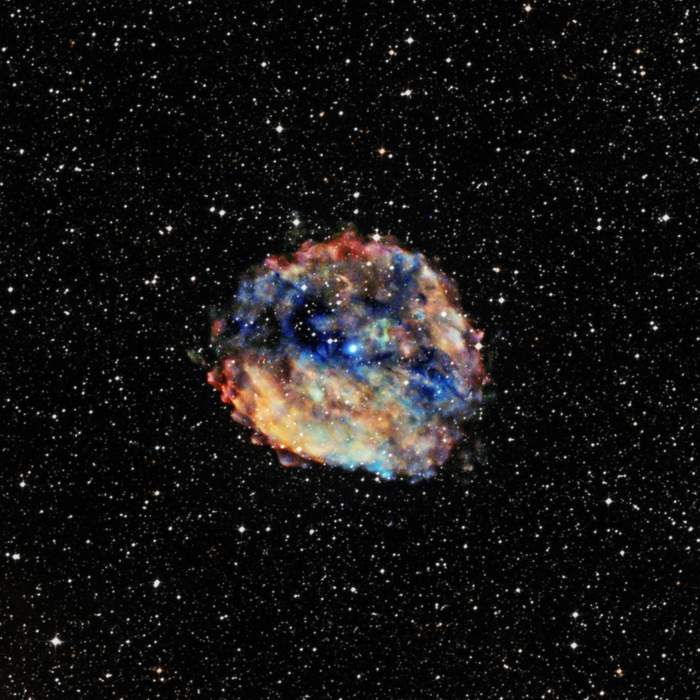May 4 2022Reviewed by Alex Smith
Pulsars are the magnetically charged remnants of a shattered neutron star that spin at speeds ranging from one to hundreds of rotations per second. The X-Ray wavelength range is generated by these celestial bodies, which are each 12 to 15 miles in diameter. Scientists from the University of Illinois Urbana-Champaign devised a novel method for spacecraft to travel in deep space by combining signals from various pulsars.
 Image Credit: X-Ray: NASA/CXC/University of Amsterdam/N.Rea et al; Optical: DSS
Image Credit: X-Ray: NASA/CXC/University of Amsterdam/N.Rea et al; Optical: DSS
We can use star trackers to determine the direction a spacecraft is pointing, but to learn the precise location of the spacecraft, we rely on radio signals sent between the spacecraft and the Earth, which can take a lot of time and requires use of oversubscribed infrastructure, like NASA’s Deep Space Network.
Zach Putnam, Professor, Aerospace Engineering, University of Illinois Urbana-Champaign
“Using X-Ray navigation eliminates those two factors, but until now, required an initial position estimate of the spacecraft as a starting point. This research presents a system that finds candidates for possible spacecraft locations without prior information, so the spacecraft can navigate autonomously,” Putnam says.
“Also, our ground communication systems for deep space missions are overloaded right now,” he added. “This system would give spacecraft autonomy and reduce the dependency on the ground. X-Ray pulsar navigation gets us around that and allows us to determine where we are, without calling.”
Since the atmosphere filters out all X-Rays, researchers have to be in space to see them, according to Putnam. As researchers detect the peak in the X-Ray emissions every time the pulsar spins around and points toward us, like the ray of light cast from a lighthouse beacon, the pulsars generate electromagnetic radiation that looks like pulses.
“Each pulsar has its own characteristic signal, like a fingerprint,” he said. “We have records of the X-Rays over time from the 2,000 or so pulsars and how they’ve changed over time.”
The intersection of three signals, similar to the Global Positioning System, can be used to identify location.
“The issue with pulsars is that they spin so fast that the signal repeats itself a lot,” he said. “By comparison, GPS repeats every two weeks. With pulsars, while there are an infinite number of possible spacecraft locations, we know how far apart these candidate locations are from each other.”
“We are looking at determining spacecraft position within domains that have diameters on the order of multiple astronomical units, like the size of the orbit of Jupiter—something like a square with one billion miles on a side. The challenge we are trying to address is, how do we intelligently observe pulsars and fully determine all possible spacecraft locations in a domain without using an excessive amount of compute resources,” Putnam said.
Kevin Lohan, a Ph.D. student, created an algorithm that combines observations from multiple pulsars to calculate all of the spacecraft’s probable positions. In two or three dimensions, the algorithm generates all of the candidate intersections.
We used the algorithm to study which pulsars we should observe to reduce the number of candidate spacecraft locations within a given domain.
Zach Putnam, Professor, Aerospace Engineering, University of Illinois Urbana-Champaign
The findings demonstrate that studying sets of pulsars with extended periods and short angular separations considerably reduced the number of potential solutions within a domain.
A part of the research was financially supported by NASA.
Journal Reference:
Lohan, K., et al. (2022) Characterization of Candidate Solutions for X-Ray Pulsar Navigation. IEEE Transactions on Aerospace and Electronic Systems. doi.org/10.1109/TAES.2022.3152684.
Source: https://illinois.edu/